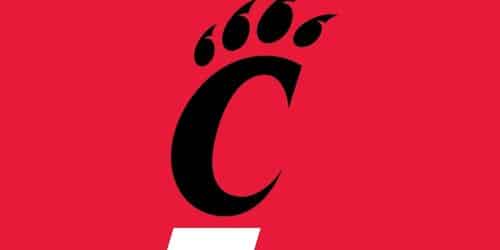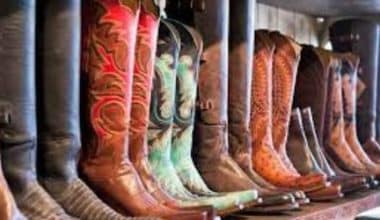The Cincinnati Bengals football club borrowed the name “Bengals” from the white Bengal tiger that once roamed the zoo. So, the football squad celebrates its history and its tradition. Even though they have never won a league, the Bengals are one of the most well-known teams because of their unique look. Though the Cincinnati Football Club has changed its look many times, it has always used the same orange and black color scheme. This was the first time that orange and black were associated with tigers without the help of pictures. In this article, you will learn everything about the old Cincinnati Bengals logo, their history, stadium, players, and where to watch their games.
What Is the Bengals’ Symbol?
In 2004, the Cincinnati Bengals chose their current logo. It was made by Verlander Design, which went for simplicity by using the first letter of the football team’s name as the main element. However, they took off the tiger and the lengthy sentences, leaving only the short orange “B” with its three black tiger stripes. The typeface, a slab serif without curves on the squiggles, is the same as in the previous edition. “B” appears to be brief and clear. By making the top and bottom the same, the designers were able to show how proportions work together.
The orange letter is crossed by three pointed black lines from above. The tiger design is reminiscent of the 1981 logo’s striped helmet. The redesigned Cincinnati Bengals logo made its debut on April 22, two days before the NFL Draft.
Why Do the Bengals Say, “Who Dey?”
Although the Bengals and “Who Dey” are associated, their origin is obscure. The unknown is the precise origin of the now-famous shout, although the most widely accepted explanation dates back to the era of Riverfront Stadium and includes a nearby brewery called Hudepohl Beer Company. The stadium, a multi-use building in Cincinnati, served as both the Bengals’ and Cincinnati Reds’ home field from 1970 until 1999.
Long before the Bengals were ever established, Hudepohl has lived in Cincinnati since 1885. Even the Reds, the original professional baseball organization, came before the beer firm.
Fans have spent hundreds of years enjoying the beer because the firm has been a staple of Cincinnati for so long, especially while supporting their neighborhood NFL team. Hudepohl was eventually offered for sale by stadium beer sellers during sporting events. Vendors could be heard yelling “Hudy,” which is short for Hudepohl and sounds a lot like “HuDey” or “Who Dey,” as they walked up and down aisles.
The phrase became famous.
The increase in “Who Dey” popularity
It wasn’t until the 1981 season when the Bengals won their first playoff game in team history and progressed to their first Super Bowl, that the slogan that was frequently shouted inside the stadium took on a more specific meaning.
The Bengals lost 26-21 to the San Francisco 49ers in Super Bowl XVI, which was played between the two teams. But around that time, Hudepohl Brewery branded one of their beer cans with “Who Dey.”
“Who Dey” gained widespread recognition when the Bengals made it to their second Super Bowl in their history in 1988, a game they lost to the 49ers.
What Separates “Who Dey” From “Who Dat”?
The Bengals’ “Who Dey” and the New Orleans Saints’ “Who Dat” chants are obviously related. The song “Who Dat” initially debuted in New Orleans in the late 1800s as a component of the vaudeville and minstrel shows that were performed there. Before being formally adopted by the Saints in 1983, the expression acquired popularity at universities like LSU and Southern in the 1960s and 1970s. The complete phrase is: “Who Dat? Who said they would defeat the Saints? Technically, “Who Dey” entered Bengals history earlier in the 1980s, but the question of whose phrase originated first is still up for controversy.
“Who Dey’s” deeper meaning Bengals supporters frequently use the phrase “Who Dey,” but it also refers to a longer chant that goes, “Who dey, who dey, who dey believe going to beat dem Bengals?”
Many teams have been unable to respond to that question as the Bengals have made their postseason run. In the wild-card round, Cincinnati beat the Las Vegas Raiders by a score of 26-19. The Tennessee Titans, the No. 1 seed, were then defeated by the Bengals in the Divisional Round. Following that, the Bengals defeated the Kansas City Chiefs in the AFC Championship, a group that had been in the previous two Super Bowls.
The Bengals’ success has surprised them considering that they had just four victories at the end of the 2020 campaign. A year ago, “Who Dey” would have been taken literally because the Bengals had fallen to the basement of the NFL due to their utter irrelevance.
But as the Bengals approach their last opponent of the season, the Rams, “Who Dey” has evolved into a scream of confidence that will energize Bengals supporters as their club takes on its first Super Bowl triumph in franchise history.
Cincinnati Bengals Logo History and Evolution
The Cincinnati Football Club’s visual identity has undergone various redesigns over the years, but they all have the same distinctive orange and black color scheme, which is the first to be connected to tigers, regardless of the image’s outlines.
1967 – 1969
In 1967, the history of Cincinnati Bengals unveiled its original logo, which featured a colorful caricature of a humorous tiger. The white helmet slid off the cartoon animal’s head, pointing at a very high pace, as he ran to the right while holding a white football in his paws. Although it conveyed a feeling of the club’s readiness and commitment to battle and win, it was a warm and cheery picture.
1970 – 1980
As history would have it, the Cincinnati Bengals changed their logo in 1970 to have black letters on an orange helmet. Even though there was no representation of a tiger in this rendition, the color scheme looked like one. The narrow sans-serif typeface’s powerful black text was highlighted in white to stand out against the solid, vivid background.
1981 – 1986
Also, the club’s logo was changed in 1970, and the black pattern on the new shape of the orange helmet now looked like a tiger’s coat. The helm had been painted orange with smooth black lines all over it, giving it a sleek, contemporary appearance. On the other side of the black grill was a little white component that was in the form of a solid dot.
1987 – 1997
The lines and shapes of the orange and black helmet were made better and changed when the Cincinnati Bengals logo was made in 1987. A little white piece was added to the back of the helmet, and the black grill grew in size. Also, the black stripes were made neater and put farther apart, making the design look more like a tiger.
1997 – 2003
The club’s visual identity underwent a change in 1997, although the insignia used by the Cincinnati Bengals during that time is still utilized today as the team’s secondary logo.
Also, the logo shows a tiger with its mouth open in a way that is both modern and powerful. The frightening animal is drawn with strong, smooth lines in the colors black, orange, and white, with its outlines being clean and precise. The team’s personality and goal are reflected in the tiger’s menacing and fierce eyes.
2004 – Today
The Cincinnati Bengals unveiled their new logo in 2004. It featured a stylized, extra-bold orange letter “B” with three thick, pointed black lines that began at the top of the letter and continued to the bottom. When compared to the tiger pattern, the enormous letter, with its bold, square serifs and acute angles, exudes confidence and seriousness.
When Did the Bengals Switch to the B Logo?
The “B” replaced the “Tiger Head” and “Leaping Tiger” insignia used from 1997 to 2003 when the new uniforms and logos were introduced in 2004.
Though Since the Cincinnati Bengals team announced they were redesigning their jerseys, there has been a noticeable buzz among supporters of the team. The team hasn’t changed that much on the outside since 2004.
The team’s striped helmet, as far as we know, won’t alter along with the attire. Now that we know, their logo will also be preserved.
Dehner Jr. stated, “The logo is not changing.” “The ‘B’ is staying, thus the ‘B’ with the stripes will still be on the field.”
While the logo is undoubtedly more divisive among fans, the helmet is virtually universally adored by them. There was a significant expectation that the tiger emblems would return to the team’s on-field markings with the new jerseys. However, the B will remain. For what it’s worth, the team’s official website continues to utilize the Tiger Head.
The Bengals did, however, claim that new jerseys were on the way, and that is what was published. We most likely would have come across the term “rebrand” someplace if there had been a logo change. Only the Los Angeles teams, the Rams and Chargers, changed their logos last season, while an unprecedented seven clubs changed their uniforms.
Is the Bengals’ Logo a Tiger?
No, the current Bengals logo only has one letter, whereas the wordmark contains the team’s whole name. Its standout feature is a unique font that is readily recognizable thanks to its distinctive serifs.
The sleek and distinctive Bengals typeface is based on a large geometric serif font, such as Rude Slab ExtraBold Wide Black or Rockwell Std Extra Bold, but the diagonally positioned sharp serifs and slightly enlarged contours give the inscription an entirely different appearance.
Sadly, it appears that for now, the “B” will continue to be the primary logo.
Old Cincinnati Bengals Logo
The visual identity of the Cincinnati Football Club has undergone a number of redesigns over the years, but they have all maintained the same recognizable orange and black color scheme, which is the first to be associated with tigers, independent of the image’s outlines.
1967 – 1969
The Cincinnati Bengals’ first logo, which depicted a bright caricature of a playful tiger, debuted in 1967. The cartoon animal sprinted to the right, a white football in his paws, the white helmet sliding off his head at a rapid speed. It was a friendly and upbeat image that still expressed the club’s preparedness and desire to fight and succeed.
1970 – 1980
In 1970, the Bengals’ logo was changed to have black text on an orange helmet. Although a tiger was not depicted in this depiction, the color palette gave the impression that one was. Strong black lettering in the narrow sans-serif typeface was accentuated in white to stand out against the dark, colorful background.
1981 – 1986
In 1970, the club’s logo was updated, and the black pattern that now appeared on the altered orange helmet’s contours resembled a tiger’s coat. The helm looked sleek and modern since it was painted orange with clean black lines all over it. A little white component in the shape of a solid dot was located on the opposite side of the black grill.
1987 – 1997
Furthermore, the old Cincinnati Bengals logo, created in 1987 for the franchise, improved and altered the lines and forms of the orange and black helmet. The black grill got larger, and a tiny white piece was placed on the back of the helmet. The black stripes were neatened and made more evenly spaced, giving the pattern a more tiger-like appearance.
1997 – 2003
However, although the history of the Cincinnati Bengals’ logo from that era continues to be used as the team’s secondary logo, the club’s visual identity changed in 1997.
The image of a tiger with its mouth open in the logo is strong and modern. Strong, slick lines in the shades of white, orange, and black are used to depict the frightful beast, and its contours are clear and distinct. In addition, the frightening and furious eyes of the tiger express the character and purpose of the squad.
Why Do the Bengals Say, Who Dey?
Although there is no conclusive explanation for how the cheer started, one well-liked theory revolves around a nearby brewery.
Bengals offensive lineman Dave Lapham agrees with this. In 1981, fans popularized the cheer when the team won its first playoff game and advanced to its first Super Bowl, losing to the 49ers. In the same year, Hudepohl Brewery put the message on a can. Since the Bengals won Super Bowl XXIII in 1988, the chant has come to represent the fan base. The Bengals and Saints employ the terms “Who Dey” and “Who Dat.”
Despite no evidence, each city’s fans will likely claim the rival club stole their phrase. The song “Who Dat” was first performed in New Orleans in the late 1800s.
The phrase was popularized at LSU and Southern in the 1960s and 1970s. Before the Saints adopted it in 1983, “Who Dat?” became a fan favorite. anyone said they’d beat the Saints? Even now, it’s unclear who developed the cheer. Sean Payton said in his parting statement as Saints coach that he’s a Bengals fan, but “Who Dey came after (Who Dat)” So, while the Bengals’ “Who Dey” cheer was the first, “Who Dat” has been around longer.
How Much Would it Cost to Buy the Cincinnati Bengals?
Owner Mike Brown attributes the increased value of the Cincinnati Bengals to the opening of new NFL stadiums and franchise relocations. However, according to yearly NFL franchise value assessments done by Forbes magazine, the Bengals organization is worth an estimated $1.68 billion. This valuation increased from the previous year by 16%. The value of an NFL club climbed by 19% to $2.3 billion on average.
After ranking 29th among the 32 NFL clubs a year ago, the Bengals now rank 30th. Only the Detroit Lions ($1.65 billion) and Buffalo Bills ($1.5 billion) are less valuable than the Bengals. Furthermore, the Bengals are worth more than $1.85 billion, compared to the Cleveland Browns. The Dallas Cowboys are the most valuable NFL team, worth $4.2 billion.
The Bengals’ $329 million in income increased by 11%, yet it is still one of the lowest in the NFL. However, according to Forbes, the Bengals made an operational profit of $60 million. That increased by 8% from the previous year. The majority of that money goes back into the team. According to Forbes, player costs increased by 17%, according to Forbes.
Greater cities have higher sponsorship and premium ticket revenue streams, notwithstanding the NFL’s revenue sharing. Last year, the Cowboys made $700 million, double the Bengals’.
The Bengals’ poor fan support hasn’t helped matters either. The Bengals were 28th in the NFL in attendance last season, averaging just 61,389 people per game. Also, the Bengals hosted a playoff game last year and tied for the most wins in a regular season.
According to Forbes’ Mike Ozanian, “this is because of two economic dynamics specific to the NFL: tremendous profitability and content demand.”
Cincinnati Bengals Stadium
Paycor Stadium in Cincinnati, Ohio, was once Paul Brown Stadium. The stadium opened on August 19, 2000, as the Cincinnati Bengals’ NFL home. The 22-acre (8.9 ha) stadium, named for Bengals founder Paul Brown, can hold 65,515 people. “The Jungle” is both an unofficial Guns N’ Roses song and the Bengal tiger’s natural home. Green stadium chairs make this reference.
Hamilton County voters approved a half-percent sales tax increase in 1996 to fund the Cincinnati Bengals’ and Reds’ new stadium. Before Cinergy Field, the Bengals, and Reds shared Riverfront Stadium. Both clubs said that the old multipurpose building didn’t have any modern amenities or things that small-market teams need to do well. Cinergy Field was replaced with Paul Brown Stadium in 1998. Paul Brown Stadium opened for the 2000 NFL season. Before it was torn down in 2002, Cinergy Field was only used for baseball for two seasons while it was falling apart.
The Cincinnati Bengals’ stadium was natural Kentucky bluegrass for four years, but maintenance issues made it the third worst in the league. The county chose FieldTurf. The field markings are sewn into the artificial turf, not painted. Maintenance costs are cut by $100,000 annually. [Cite] It helps Paycor Stadium’s turf withstand more use. Furthermore, in 2004, FieldTurf began. The playing surface contains “five kilometers of piping” to keep the rubber inlays warm. The stadium installed Act Global synthetic turf in April 2012. In 2018, the stadium got new artificial turf. In addition, Shaw Sports Turf uses UltraLoc backing and Strenexe XD fibers.
Who Is the Greatest Cincinnati Bengals of All Time?
While there is disagreement about whether of two quarterbacks is the best in Bengals history, Anthony Munoz is without a doubt the greatest Bengal of all time.
In fact, Munoz’s protection of both of those quarterbacks for a portion of his career is largely responsible for their success.
Furthermore, Anthony Munoz, one of seven Bengals to play in each of Cincinnati’s Super Bowl runs, led the Bengals’ offensive line for 13 years during what many consider to be the best era of Bengals football. 185 games were played during Munoz’s tenure, and he started 183 of them. Even worse, he caught four touchdown passes while playing left tackle.
Munoz received 11 Pro Bowl selections and nine All-Pro nominations and was inducted into the Hall of Fame for his ability to protect the quarterback and dominate the defensive line in the running game. Munoz is essentially the only Bengals player to receive the honor, even though three former Bengals have already been elected into the Hall of Fame as coaches and Charlie Joiner spent most of his career outside of Cincinnati.
Due to the length of his career, his 11 Pro Bowl selections, his involvement in both of Cincinnati’s Super Bowl appearances, and, of course, his entry into the Hall of Fame, Munoz is widely regarded as the finest Bengal to ever play the position.
What Year Did the Bengals Go 8-0?
5th, November 2015
When Mohamed Sanu scored a 25-yard touchdown on a reverse play with 13:26 left, the 8-0 Bengals and quarterback Andy Dalton beat the Browns 31-10. Furthermore, the players for the Cincinnati Bengals went into the national championship game with high hopes and put a lot of money into deflating Johnny Football for the second time in a year. In addition, the first AFC Central-North team to do it. They tied the franchise record of eight straight regular-season wins.
Cincinnati Bengals Players
Here is the list of the current Cincinnati Bengals Players
Offense
| NO | PLAYER | POS | HT | WT | DOB (AGE) | EXP | COLLEGE |
|---|---|---|---|---|---|---|---|
| 8 | Brandon Allen | QB | 6-2 | 209 | 9/5/1992 (30) | 6 | Arkansas |
| 9 | Joe Burrow | QB | 6-4 | 215 | 12/10/1996 (25) | 3 | LSU |
| 25 | Chris Evans | RB | 5-11 | 215 | 10/5/1997 (25) | 2 | Michigan |
| 28 | Joe Mixon | RB | 6-1 | 220 | 7/24/1996 (26) | 6 | Oklahoma |
| 34 | Samaje Perine | RB | 5-11 | 235 | 9/16/1995 (27) | 6 | Oklahoma |
| 32 | Trayveon Williams | RB | 5-8 | 206 | 10/18/1997 (24) | 4 | Texas A&M |
| 83 | Tyler Boyd | WR | 6-2 | 203 | 11/15/1994 (27) | 7 | Pittsburgh |
| 1 | Ja’Marr Chase | WR | 6-0 | 201 | 3/1/2000 (22) | 2 | LSU |
| 85 | Tee Higgins | WR | 6-4 | 219 | 1/18/1999 (23) | 3 | Clemson |
| 17 | Stanley Morgan | WR | 6-0 | 205 | 9/7/1996 (26) | 4 | Nebraska |
| 11 | Trent Taylor | WR | 5-8 | 181 | 4/30/1994 (28) | 5 | Louisiana Tech |
| 80 | Mike Thomas | WR | 6-1 | 197 | 8/16/1994 (28) | 7 | So. Miss |
| 86 | Devin Asiasi | TE | 6-3 | 260 | 8/14/1997 (25) | 3 | UCLA |
| 88 | Hayden Hurst | TE | 6-4 | 250 | 8/24/1993 (29) | 5 | South Carolina |
| 84 | Mitchell Wilcox | TE | 6-4 | 250 | 11/7/1996 (25) | 3 | South Florida |
| 63 | Trey Hill | C | 6-4 | 335 | 1/23/2000 (22) | 2 | Georgia |
| 64 | Ted Karras | C | 6-4 | 310 | 3/15/1993 (29) | 7 | Illinois |
| 77 | Hakeem Adeniji | OT | 6-4 | 315 | 12/8/1997 (24) | 3 | Kansas |
| 71 | La’el Collins | OT | 6-4 | 315 | 7/26/1993 (29) | 8 | LSU |
| 70 | Dante Smith | OT | 6-5 | 309 | 6/8/1998 (24) | 2 | East Carolina |
| 73 | Jonah Williams | OT | 6-5 | 312 | 11/17/1997 (24) | 4 | Alabama |
| 65 | Alex Cappa | OG | 6-6 | 310 | 1/27/1995 (27) | 5 | Humboldt State |
| 79 | Jackson Carman | OG | 6-5 | 322 | 1/22/2000 (22) | 2 | Clemson |
| 74 | Max Scharping | OG | 6-6 | 325 | 8/10/1996 (26) | 4 | N. Illinois |
| 67 | Cordell Volson | OG | 6-6 | 315 | 7/20/1998 (24) | R | N. Dakota St. |
Defense
| NO | PLAYER | POS | HT | WT | DOB (AGE) | EXP | COLLEGE |
|---|---|---|---|---|---|---|---|
| 93 | Jeffrey Gunter | DE | 6-4 | 263 | 6/1/1999 (23) | R | C. Carolina |
| 91 | Trey Hendrickson | DE | 6-4 | 270 | 12/5/1994 (27) | 6 | FAU |
| 94 | Sam Hubbard | DE | 6-5 | 265 | 6/29/1995 (27) | 5 | Ohio St. |
| 58 | Joseph Ossai | DE | 6-4 | 263 | 4/13/2000 (22) | 2 | Texas |
| 96 | Cameron Sample | DE | 6-3 | 272 | 9/20/1999 (23) | 2 | Tulane |
| 95 | Zachary Carter | DT | 6-4 | 290 | 4/7/1999 (23) | R | Florida |
| 92 | B.J. Hill | DT | 6-3 | 311 | 4/20/1995 (27) | 5 | NC State |
| 97 | Jay Tufele | DT | 6-3 | 305 | 7/25/1999 (23) | 2 | USC |
| 68 | Josh Tupou | DT | 6-3 | 340 | 5/2/1994 (28) | 5 | Colorado |
| 51 | Markus Bailey | LB | 6-0 | 235 | 3/7/1997 (25) | 3 | Purdue |
| 59 | Akeem Davis-Gaither | LB | 6-2 | 228 | 9/21/1997 (25) | 3 | App. St. |
| 44 | Clay Johnston | LB | 6-1 | 232 | 8/8/1996 (26) | 3 | Baylor |
| 57 | Germaine Pratt | LB | 6-3 | 250 | 5/21/1996 (26) | 4 | NC State |
| 55 | Logan Wilson | LB | 6-2 | 245 | 7/8/1996 (26) | 3 | Wyoming |
| 20 | Eli Apple | CB | 6-1 | 203 | 8/9/1995 (27) | 7 | Ohio St. |
| 22 | Chidobe Awuzie | CB | 6-0 | 203 | 5/24/1995 (27) | 6 | Colorado |
| 35 | Jalen Davis | CB | 5-10 | 190 | 2/2/1996 (26) | 3 | Utah St. |
| 33 | Tre Flowers | CB | 6-3 | 200 | 6/2/1995 (27) | 5 | Okla. St. |
| 21 | Mike Hilton | CB | 5-9 | 184 | 3/9/1994 (28) | 6 | Ole Miss |
| 23 | Daxton Hill | DB | 6-0 | 192 | 9/29/2000 (22) | R | Michigan |
| 31 | Michael Thomas | DB | 5-11 | 192 | 3/17/1990 (32) | 9 | Stanford |
| 30 | Jessie Bates III | FS | 6-1 | 200 | 2/26/1997 (25) | 5 | Wake Forest |
| 24 | Vonn Bell | SS | 5-11 | 215 | 12/12/1994 (27) | 7 | Ohio St. |
Special Teams
| NO | PLAYER | POS | HT | WT | DOB (AGE) | EXP | COLLEGE |
|---|---|---|---|---|---|---|---|
| 2 | Evan McPherson | K | 5-11 | 185 | 7/21/1999 (23) | 2 | Florida |
| 10 | Kevin Huber | P | 6-1 | 210 | 7/16/1985 (37) | 14 | Cincinnati |
| 48 | Cal Adomaitis | LS | 6-2 | 238 | 7/9/1998 (24) | R | Pittsburgh |
How Many Super Bowls Has Cincinnati Won?
One of the 12 teams that have never won the Super Bowl is the Bengals. However, Cincinnati Bengals players might find comfort in the fact that they at least made it to the game’s grandest stage. Even that far has never been reached by four NFL teams.
How Many Times Have the Bengals Been to the Super Bowl?
The Bengals and their players have participated in three Super Bowls and are based in Cincinnati, Ohio (1982, 1989, and 2022).
Cincinnati Bengals Where to Watch?
Most NFL games will air on CBS (AFC) and Fox in 2022 and 2023. (NFC). Sunday Night Football will air on NBC and stream on Peacock this season, while Monday Night Football will air on ESPN and stream only on Amazon Prime Video on Thursday Night Football.
NFL Channels on Live TV Streaming Services
| DIRECTV STREAM | fuboTV | Hulu + Live TV | Sling TV | YouTube TV | |
| ABC | ✔ | ✔ | ✔ | ✔ | |
| CBS | ✔ | ✔ | ✔ | ✔ | |
| ESPN | ✔ | ✔ | ✔ | ✔ | ✔ |
| FOX | ✔ | ✔ | ✔ | ✔* | ✔ |
| NBC | ✔ | ✔ | ✔ | ✔* | ✔ |
| NFL Network | ✔ | ✔ | ✔ | ✔ |
Why Did the Bengals Change Their Logo?
Deepening the hue of orange was the only change that was made during the 2021 redesign of the Bengals’ logo, but the result was an image that was bolder and more assured. The shape of the insignia did not change in any way, and the general concept remained the same as when it was first presented in 2004, despite the fact that the refining made the badge look more sophisticated and authoritative.
Why Are Cincinnati Bengals Tigers?
“to give it a link with past professional football in Cincinnati,” Brown said, “I dubbed the team the Bengals.” Another Cincinnati Bengals squad had been active in the city from 1937 through 1942, during which time they participated in the games of three different American Football Leagues. A rare white Bengal tiger lived at the world-famous zoo in the city, which also housed other exotic animals.
Did the Bengals Get a New Logo?
According to Dehner Jr., “the logo will not be changed.” “The ‘B’ will remain, and as a result, the field will continue to have the ‘B’ adorned with stripes.” The logo, on the other hand, seems to divide fans more sharply, despite the fact that practically all of them prefer the helmet.
Have the Bengals Ever Won the Super Bowl?
The only team among the conference finalists that have not previously taken home the Lombardi Trophy is Cincinnati. The only other time they played was in the 1981 season when they faced up against Joe Montana and the 49ers once again.
What Was the Bengals’ Original Name?
In 1967, Paul Brown, a former head coach for the Cleveland Browns, was given the authorization to start an American Football League franchise in Cincinnati. At the time, the AFL was in the process of being reorganized. Brown selected the moniker Bengals as a way to pay homage to the various sports teams that had previously competed in Cincinnati. 1968 was the first year that the squad competed.
Conclusion
Although the 1980s logo serves as inspiration for the Cincinnati Bengals’ current helmet design, it is not the team’s official logo. The team’s helmets are orange and feature a black tiger-like pattern and grill on the front. The result is a striking visual identity for the squad. However, while the Bengals’ logo has seen several changes over the years, the tiger has always been a prominent design element in the history and context of its significance. Despite the fact that football is.
Related Article
- Entrepreneur ideas for 2023: See 30+ here (+ quick guide)
- SOFTWARE ASSET MANAGEMENT (SAM): Best Tools In 2023
- Tiger Woods Net Worth: How Much is He Worth in 2023
- Tom Brady Net Worth, Background Story & Business Lessons!!!
- GLOCK LOGO: Meaning, Font, and History






